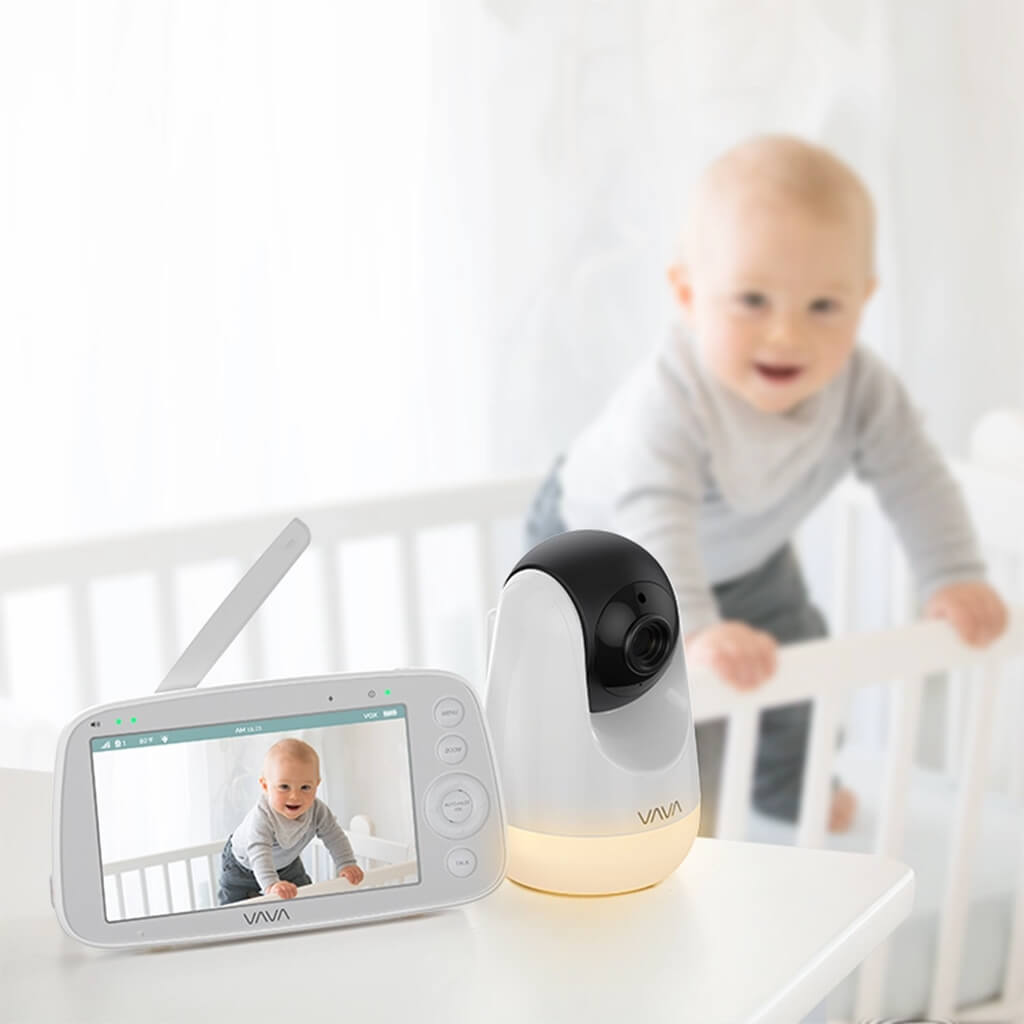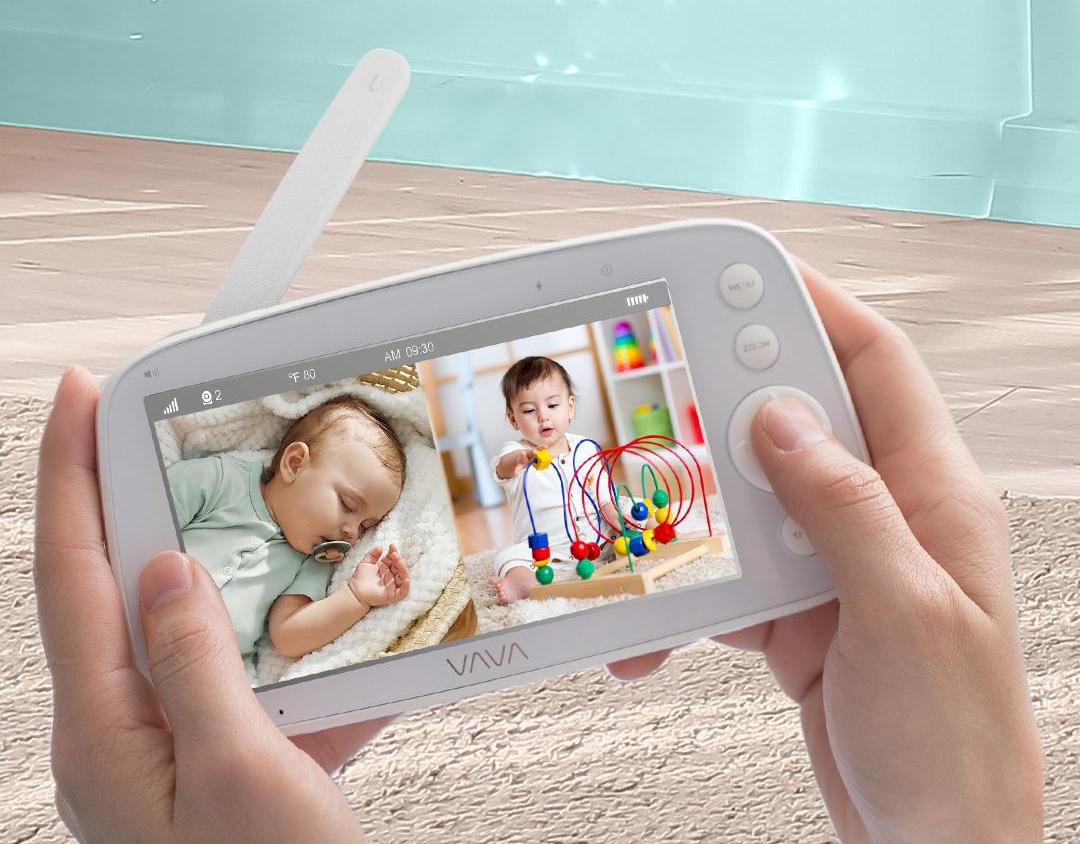Being able to peek in on your sleeping baby (or curious toddler) from the next room via baby monitor is a modern parenting miracle—until you hear stories of them getting hacked or dropping connection just when you need them most. That’s why so many parents end up Googling, “Wi-Fi vs non-Wi-Fi baby monitor: which’s safer?”
In most homes, a non-Wi-Fi, locally transmitted unit offers the strongest baby monitor privacy and security because it never connects to the internet. But if you want an app and are willing to tweak settings to lock things down, a well-secured Wi-Fi model can still be a choice.
Below, we'll compare the pros and cons of Wi-Fi vs. non-Wi-Fi baby monitors and share practical tips on baby monitor security for both types.
What Counts as “Safe” in a Baby Monitor?
A safe baby monitor protects privacy (who can see or hear the feed) and limits real-world risks, like outsiders talking through the speaker or seeing inside your nursery. Safety has two parts:
- Data security – encryption, password strength, no open ports.
- Physical reliability – stable connection, low EMF output, and child-safe placement.
If either fails, parents feel exposed. Let’s see how each technology handles these pillars of baby monitor security.
How Wi-Fi and Non-Wi-Fi Baby Monitors Work?
The basic difference between these two types of baby monitors is their working infrastructure. Here is how they contrast:
1. Wi-Fi Baby Monitors
Wi-Fi monitors connect to your router and usually send video and audio to your smartphone through an app.
2. Non-Wi-Fi Baby Monitors
Non-Wi-Fi monitors use local signals to transmit audio and video between the camera and the parent unit.
Pros and Cons of Wi-Fi Baby Monitors
Advantages
Many Wi-Fi monitors piggyback on your phone’s biometric login, so your face or fingerprint controls access instead of a static PIN. Some more perks include:
- Remote Access: You can check on your baby from anywhere, even when you’re not home.
- Cloud Features: Some models store video in the cloud for later viewing.
- Smart Integration: Can work with smart home systems like Alexa or Google Assistant.
Drawbacks
The biggest risk is hacking. Weak Wi-Fi passwords or default login codes can let strangers watch or even speak to your child. They are also:
- Internet Dependent: No internet = no monitor. Bad Wi-Fi? Causes delays.
- App Complexity: Setup can be confusing. Frequent app updates can cause issues.
- Battery Drain: Constant streaming to your phone uses up battery fast.
Pros and Cons of Non-Wi-Fi Baby Monitors
Advantages
The best baby monitor for privacy-conscious parents is a baby monitor no Wi-Fi because it is:
- Hack-Free: Since there’s no internet connection, hackers can’t hack.
- Simple Setup: Just plug it in and go—no app, no Wi-Fi setup, no passwords.
- Reliable Performance: Works consistently without delays or buffering.
- Private: All communication stays inside your home.
- Independent: Works even during internet outages or in rural areas.
Drawbacks
- No Remote Viewing: You must be within the device’s range to use it.
- Limited Storage: No cloud recording or app-based playback.
- Shorter Range: Signal usually works best within ~900–1,000 ft.
Wi-Fi vs Non-Wi-Fi Baby Monitor – Safety Snapshot
| Safety Factor | Wi-Fi | Non-Wi-Fi |
| Hacking Attack | Higher (needs encryption & strong login) | Near-zero |
| Range | Unlimited | ~900–1,000 ft. |
| Lag | Yes | No |
| Remote Viewing | Yes | No |
| Setup Complexity | Moderate to high | Very low |
Meet the VAVA Baby Monitor with Split Screen – The Privacy-First Pick
When parents search for the best non-Wi-Fi baby monitor that still feels “smart,” the VAVA baby monitor VA-IH009 often tops the list. Here’s why:
- Dual 720p cameras & split-screen show two rooms at once.
- 5-inch IPS display with 2×/4× zoom so you catch every wiggle.
- Secure 2.4 GHz FHSS link—no apps, accounts, or cloud uploads.
- 4500 mAh battery lasts 10 hrs with the screen on, 18 hrs audio-only.
- Night vision with invisible IR LEDs to let the baby sleep in total darkness.
- Expandable to four cameras for future siblings.
Fact: The VAVA baby monitor uses Frequency-Hopping Spread Spectrum (FHSS), which rapidly changes channels, so even if someone caught the signal, it would be unintelligible
Extra Steps to Boost Wi-Fi-Based Baby Monitor Security
- Change default passwords on every Wi-Fi monitor and enable two-factor authentication if offered.
- Keep firmware up-to-date—set a quick calendar reminder to check for updates every three months.
- Lock down your router with WPA3 (or at least WPA2) encryption and hide its SSID broadcast.
- Wipe all stored data and reset to factory settings before gifting or reselling any Wi-Fi unit.
Conclusion
In the battle of Wi-Fi vs non-Wi-Fi baby monitor safety, non-Wi-Fi systems win for out-of-the-box privacy and simplicity, while Wi-Fi units trade a bit of security for anywhere-access and smart-home perks. If your top worry is strangers sneaking onto the feed, choose a baby monitor without Wi-Fi like the VAVA baby monitor with split screen—a feature-packed device that keeps footage locked inside your home. But if you prefer notifications on your phone, pick a reputable Wi-Fi model, harden your network, and stay vigilant with updates. Either way, a few smart setup steps—and the right monitor for your lifestyle—will keep your little one safe and sound.





Share: